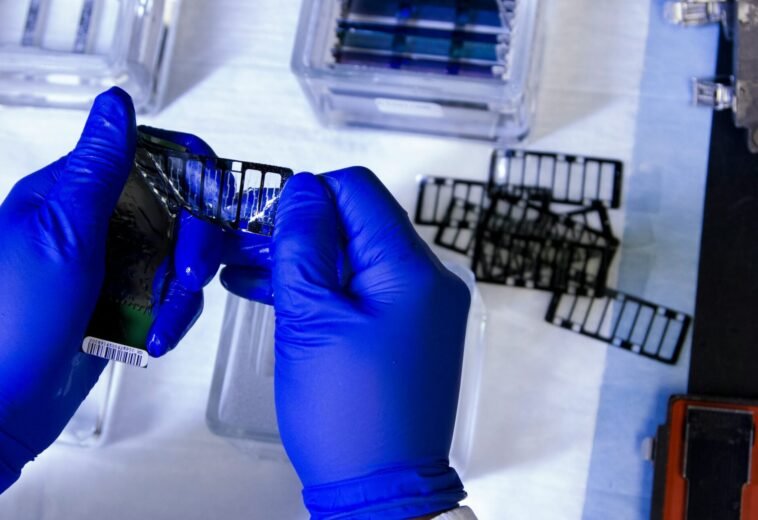What is Forensic Science?
What is Forensic Science?
Introduction
Forensic science is a fascinating field that bridges the gap between science and the legal system. By applying scientific principles to the investigation of crimes, forensic science plays a crucial role in uncovering the truth and ensuring justice is served. This article delves into the definition, history, branches, techniques, and future of forensic science, providing a comprehensive overview of this vital discipline.
Definition of Forensic Science
Forensic science is the application of scientific methods and principles to investigate crimes and examine evidence that can be presented in a court of law. It encompasses a wide range of scientific disciplines, each providing unique insights and methods for solving crimes and aiding the justice system.
Importance in the Modern World
In today’s world, forensic science is indispensable. It aids law enforcement agencies in solving crimes, exonerating the innocent, and convicting the guilty. The advancements in forensic technology have significantly improved the accuracy and efficiency of criminal investigations, thereby enhancing public safety and confidence in the justice system.
History of Forensic Science
Early Beginnings
The roots of forensic science can be traced back to ancient civilizations. For example, in China during the 6th century, fingerprints were used as a form of identification. Ancient Greeks and Romans also employed rudimentary forensic techniques to solve crimes.
Key Historical Milestones
- 13th Century: The first known forensic science book, “Xi Yuan Lu” (The Washing Away of Wrongs), was published in China.
- 1892: Sir Francis Galton’s book “Fingerprints” established the uniqueness of fingerprints as a method of identification.
- 1901: Karl Landsteiner discovered blood groups, which became crucial in forensic investigations.
- 1984: Sir Alec Jeffreys developed DNA profiling, revolutionizing forensic science.
Branches of Forensic Science
Criminalistics
Criminalistics involves the collection, analysis, and interpretation of physical evidence such as hair, fibers, glass, and paint.
Digital Forensics
Digital forensics focuses on recovering and investigating data from digital devices, including computers, smartphones, and networks.
Forensic Pathology
Forensic pathology involves determining the cause of death by examining a deceased body, often through autopsies.
Forensic Anthropology
Forensic anthropologists study human skeletal remains to determine identity, cause of death, and other details relevant to criminal cases.
Forensic Odontology
Forensic odontologists use dental records to identify human remains and analyze bite marks.
Forensic Toxicology
Forensic toxicologists analyze bodily fluids and tissues to detect the presence of drugs, alcohol, poisons, and other toxic substances.
Role of Forensic Scientists
Evidence Collection
Forensic scientists meticulously collect evidence from crime scenes, ensuring that it is preserved and uncontaminated.
Laboratory Analysis
In the lab, forensic scientists use various techniques to analyze evidence, such as DNA profiling, chemical analysis, and microscopy.
Expert Testimony
Forensic scientists often serve as expert witnesses in court, explaining their findings and the methods used to reach conclusions.
Techniques and Tools Used in Forensic Science
DNA Profiling
DNA profiling involves extracting and analyzing an individual’s genetic material to identify them uniquely. It has become a cornerstone of modern forensic science.
Fingerprint Analysis
Fingerprint analysis compares the unique patterns of ridges and valleys on individuals’ fingers to identify them.
Ballistics
Ballistics involves the examination of firearms, bullets, and bullet impacts to determine the details of a shooting incident.
Trace Evidence Analysis
Trace evidence analysis examines tiny pieces of evidence, such as hair, fibers, and soil, to link suspects and victims to crime scenes.
The Forensic Science Process
Crime Scene Investigation
The forensic process begins at the crime scene, where investigators collect evidence and document the scene meticulously.
Chain of Custody
Maintaining a secure chain of custody ensures that evidence is not tampered with or contaminated, preserving its integrity for court proceedings.
Laboratory Processing
Collected evidence is analyzed in forensic laboratories using various scientific techniques to uncover crucial information.
Forensic Science in Popular Culture
TV Shows and Movies
Television shows and movies, such as “CSI: Crime Scene Investigation” and “Dexter,” have popularized forensic science, albeit sometimes inaccurately.
Influence on Public Perception
While forensic science in popular culture has raised awareness, it has also led to misconceptions about the speed and infallibility of forensic investigations.
Challenges in Forensic Science
Legal and Ethical Issues
Forensic scientists must navigate complex legal and ethical issues, such as privacy concerns and the potential for wrongful convictions.
Technological Limitations
Despite advancements, forensic science is limited by the available technology, which can affect the accuracy and reliability of evidence analysis.
Human Error
Human error, whether in evidence collection, analysis, or interpretation, can significantly impact forensic investigations and outcomes.
Advancements in Forensic Science
New Technologies
Emerging technologies, such as advanced DNA sequencing and digital forensics tools, are continually improving the field of forensic science.
Improved Methodologies
Ongoing research and development lead to more refined methodologies, increasing the accuracy and reliability of forensic analysis.
Forensic Science Education and Careers
Degree Programs
Aspiring forensic scientists can pursue degrees in fields such as forensic science, biology, chemistry, and criminal justice.
Career Paths
Career options in forensic science include roles as crime scene investigators, forensic lab analysts, forensic pathologists, and digital forensic experts.
Impact on the Legal System
Role in Criminal Justice
Forensic science is integral to the criminal justice system, providing critical evidence that can make or break cases.
High-Profile Cases
Notable cases, such as the O.J. Simpson trial and the JonBenét Ramsey case, have highlighted the crucial role of forensic evidence in high-stakes investigations.
Forensic Science and Innocence Projects
Exonerations Through Forensic Evidence
Innocence projects use forensic evidence to exonerate wrongfully convicted individuals, underscoring the importance of accurate and reliable forensic analysis.
Case Studies
Forensic science has been instrumental in overturning wrongful convictions and exonerating individuals who were unjustly imprisoned. These case studies underscore the profound impact of forensic advancements in ensuring justice.
The Case of the Central Park Five
One of the most notable cases of exoneration facilitated by forensic science is that of the Central Park Five. In 1989, five teenagers—Kevin Richardson, Raymond Santana, Antron McCray, Yusef Salaam, and Kharey Wise—were wrongfully convicted of raping a jogger in Central Park, New York. Despite the lack of physical evidence linking them to the crime, their convictions were largely based on coerced confessions. It wasn’t until 2002, when convicted rapist Matias Reyes confessed to the crime and DNA evidence confirmed his involvement, that the Central Park Five were exonerated. This case highlighted the importance of DNA evidence in correcting wrongful convictions and led to widespread calls for criminal justice reform.
The Exoneration of Anthony Wright
In Philadelphia, Anthony Wright was exonerated in 2016 after spending 25 years in prison for a rape and murder he did not commit. Wright was convicted based on a coerced confession and flawed forensic evidence. However, DNA testing conducted years later revealed that the DNA at the crime scene did not match Wright’s but instead matched that of a deceased serial rapist. This breakthrough led to Wright’s exoneration, demonstrating how modern forensic techniques can uncover the truth and rectify judicial errors.
The Case of Richard Phillips
Richard Phillips, from Michigan, spent 45 years in prison for a murder he did not commit, making him the longest-serving wrongfully incarcerated individual in the United States to be exonerated. In 2018, new evidence, including witness testimony and lack of forensic evidence linking Phillips to the crime, led to his exoneration. His case underscores the critical role of comprehensive forensic review and the re-examination of evidence in securing justice for the wrongfully convicted.
The Exoneration of the West Memphis Three
The West Memphis Three—Damien Echols, Jason Baldwin, and Jessie Misskelley—were convicted in 1994 for the murders of three boys in West Memphis, Arkansas. Their convictions were based on dubious confessions and lack of physical evidence. Years later, new forensic evidence, including DNA analysis that did not match the accused, and widespread public advocacy led to their release in 2011 after entering Alford pleas. This case illustrates the limitations of forensic science at the time and the ongoing need for advancements in forensic methodologies.
Future of Forensic Science
Emerging Trends
The future of forensic science includes trends such as the use of artificial intelligence, machine learning, and improved genetic analysis techniques.
Potential Developments
Potential developments may include more precise and non-invasive forensic techniques, enhancing the field’s effectiveness and scope.
Misconceptions About Forensic Science
Common Myths
Popular misconceptions include the belief that forensic science can solve any crime quickly and without error, as often portrayed in media.
Reality Check
In reality, forensic science is a meticulous and sometimes slow process, with inherent limitations and the potential for errors.
Conclusion
Recap of Key Points
Forensic science is a multifaceted discipline that plays a vital role in the modern legal system. From its early beginnings to its current advancements, forensic science continues to evolve, driven by new technologies and methodologies.
The Future Importance of Forensic Science
As forensic science advances, its importance in ensuring justice and public safety will only grow, making it an indispensable part of the criminal justice system.
FAQs
What qualifications do you need to be a forensic scientist?
To become a forensic scientist, you typically need a bachelor’s degree in forensic science or a related field such as biology, chemistry, or criminal justice. Advanced positions may require a master’s or doctoral degree.
How reliable is forensic science?
While forensic science is highly reliable when performed correctly, it is not infallible. The accuracy of forensic analysis depends on the quality of evidence, the methods used, and the expertise of the scientists.
Can forensic science solve any crime?
Forensic science can solve many crimes, but not all. The success of forensic investigations depends on the availability and quality of evidence.
What is the most common type of forensic evidence?
DNA evidence is one of the most common and powerful types of forensic evidence, frequently used to identify suspects and victims.
How has forensic science evolved over the years?
Forensic science has evolved significantly, from rudimentary techniques in ancient times to sophisticated technologies like DNA profiling and digital forensics, continually improving the accuracy and efficiency of criminal investigations.
- 132 views





